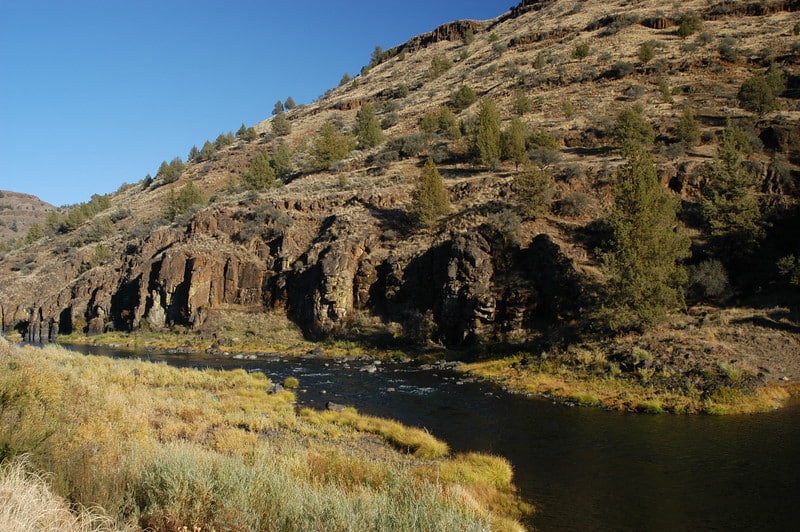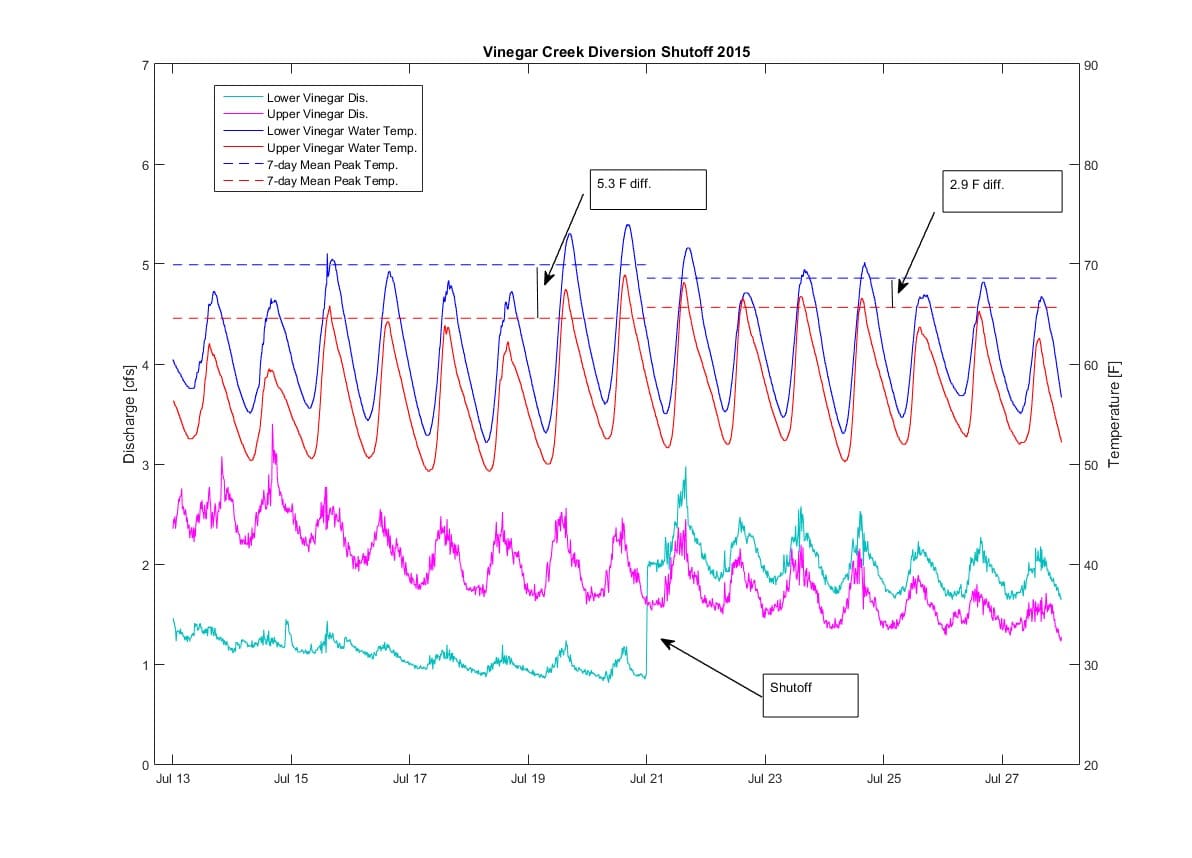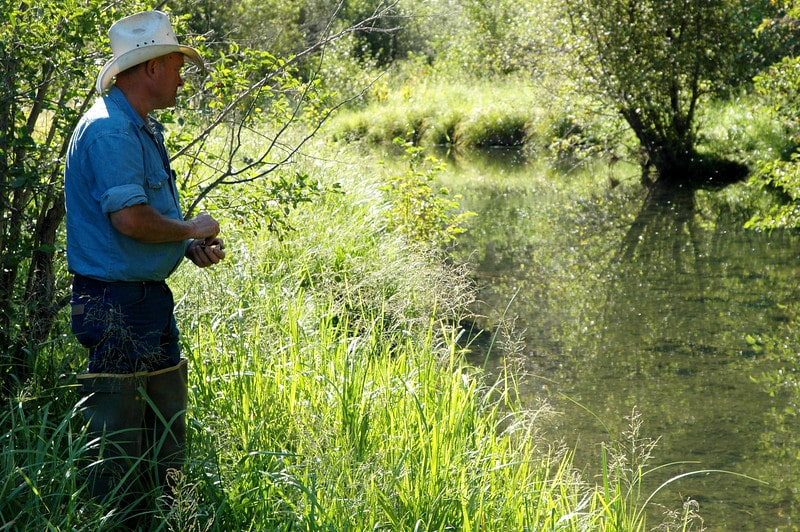The river is what we have in common: Results for the Middle Fork
May 4, 2016

Nearly a decade ago, The Freshwater Trust met Pat and Hedy Voigt, owners of Austin Ranch in John Day.
The Voigt family has been working more than 600 acres of land on the ranch in Eastern Oregon for three generations. The artery of their business, the Middle Fork John Day River, winds its way through their landscape.
This is what the Voigts and The Freshwater Trust had in common.
“We shared concern about the health of this river,” said Spencer Sawaske, hydrologist with The Freshwater Trust. “It was critical for their livelihood and fish habitat.”
The Middle Fork John Day River supports some of the last exclusively wild runs of Spring Chinook and steelhead in the Columbia River Basin. Quality instream habitat and a lack of development, dams, and hatchery fish create an ideal wild-fish sanctuary at least for most of the year.
From June through August, low streamflows combined with warm and dry weather increase water temperatures – a cause of significant kills in the 80s and 90s.
In 2006, the Voigts agreed to permanently shorten their irrigation season by 40% and leave water instream in late summer when fish need it most. With funding from the Columbia Basin Water Transactions Program, The Freshwater Trust compensates the Voigts for curtailing irrigation after July 20 every year.
“We think we’ll be running about 20 percent fewer cattle, but that still works for us economically,” said Pat Voigt. “At the same time, we’re putting a significant amount of water back instream to do something for the resource.”
The Freshwater Trust deployed water temperature sensors and streamflow gages on Vinegar Creek, a tributary of the Upper Middle Fork John Day, to ensure the deal is having the intended results.
During the exceptionally warm and dry summer of 2015, after the Voigts curtailed irrigation on July 20, flows in Lower Vinegar Creek increased by 1.1 cubic feet per second -130% of total flow at the time. The additional flow increased habitat and resulted in a 2.9˚F near-term reduction in average daily peak temperatures.

“The results are real and can be quantified,” said Sawaske. “We can be assured that the reduction in temperature is indeed happening and benefiting juvenile salmonids in Vinegar Creek and adult Spring Chinook in the Upper Middle Fork.”
The partnership has been beneficial both for fish and the ranchers. Fish receive cool water when it is most crucial and the rancher is compensated for lost agricultural production during a period of the growing season when forage production begins to wane.
“One of the keys to making partnerships like this work is our respect for keeping working lands viable,” said Caylin Barter, flow restoration director with The Freshwater Trust. “A good flow deal balances the needs of fish with the needs of farmers. We are interested in finding creative ways to improve instream flow while also respecting the landowner’s bottom line and the community’s rural character.”
#Eastern Oregon #instream flow #landowners #Middle Fork John Day River #partnership #quantified conservation #ranching #river conservation #water temperature #wild fish

